Outforia Quicktake: Key Takeaways
- Starting a fire with wet wood differs from dry wood in the base of the fire, quantity of tinder, and preparation of wood.
- To start a fire with wet wood, you need to build a platform or small hill instead of using a fire pit, use four times as much dry tinder, and bring along a starter such as chemical firelighters or magnesium shavings.
- Dry wood can be found inside wet logs by cutting them in half or in quarters, and the wet parts can be removed using a knife.
- Resin from trees and some barks can act as natural firelighters because they contain waterproof and flammable oils.
- You can also use chemical tinders like lighter fluid, chemical fuel blocks, paraffin wax, and magnesium shavings to start a fire with wet wood.
In an ideal world, it would always be sunny when we went camping or hiking into the woods. The reality is that sometimes it will rain, and all that deadwood you’re going to use for your fire is going to get wet. Don’t despair, though. There are ways to find dry wood and tinder, or dry out wet wood.
Light a fire and enjoy campfire games with wet wood and really impress your friends.
Read on to find out more.
How To Light A Dry Wood Fire
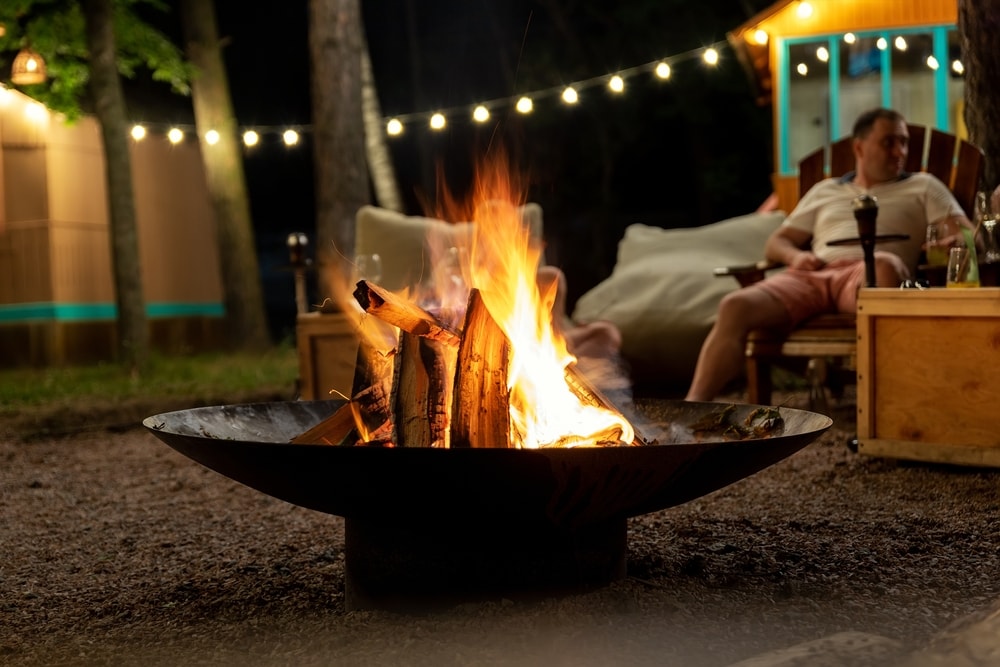
We’ll start off with how to light a dry wood fire. Many people may not have had the opportunity to practice this. It will also help to explain what the differences are when you light a wet wood fire.
You need:
- Fire lighter – an ignition source to light the fire.
- Tinder – very fine material that will catch a spark from an ignition source.
- Kindling – small pieces of wood about 6in (10cm) long and 2.5cm (1 in) wide
- Logs – larger pieces of wood, ideally chopped in halves or quarters
- Use a fire pit or dry area cleared of flammable material.
- Place the tinder in a dry spot. Have more tinder and kindling on hand.
- Make a tipi shape of kindling over this, but leave a gap to light the tinder and plenty of air gaps.
- Light the tinder with a flint or lighter.
- Keep adding more kindling as needed.
- Gradually increase the size of the wood until you have logs burning.
Use Deadwood

First, check that you are using deadwood, NOT live green wood. We’re talking about deadwood that has gotten wet. Not using fresh green wood, which, in most cases, will not burn properly or give heat.
Ash wood is one of the only woods that will burn green. This is because it has such a low moisture content. It’s for this reason that ash wood is so highly prized as firewood. Once completely dry, it burns even better and hotter.
Here is what ash tree leaves and keys (seeds) look like. The bark of ash is smooth and silvery gray. If you find ash trees, you’re already onto a winner.

Burn Time
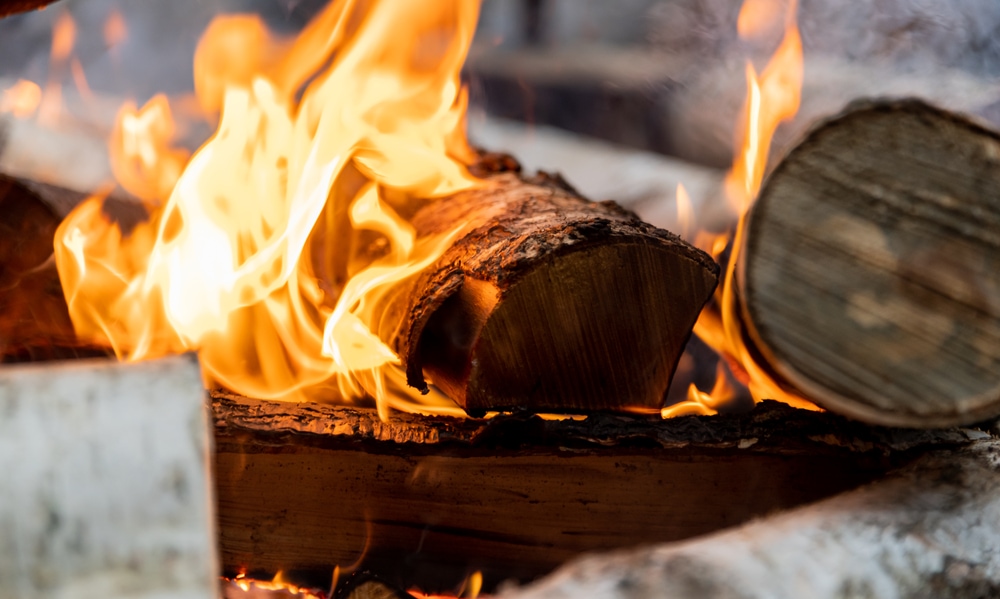
Burn time is important when starting a wet wood fire. It can be quite complex, but all we really need to understand in this scenario is the following…
The longer you can get tinder to burn, the better your chances of lighting damp wood. To have a long burn time, tinder needs to:
- Have a large surface area
- Allow for limited air flow
- Be compact enough not to burn too fast
So this is why paper is more efficient as a firelighter when it is twisted into a rope. Char cloth and tinder fungus are compacted yet allow for air flow.
Starting a Wet Wood Fire vs Starting a Dry Wood Fire

So what’s different about how you start a wet wood fire compared to starting a dry wood fire?
- The base of the fire. In dry weather, it’s fine to use a fire pit or fire bowl. In wet weather conditions, this will fill with water. It’s not ideal to try and light a fire in this. Instead, build a platform or small hill to start the fire on. Use flat stones or any dry soil or sand.
- Chemical tinder. You’re going to need four times as much dry tinder to start a fire with wet wood. You should consider bringing a starter such as chemical firelighters, lighter fluid, magnesium shavings, or paraffin wax. Remember, most of the natural kindling is going to be wet.
- Finding dry wood inside wet wood. You can do this by cutting wet logs in half or quarters with a hatchet or axe. Inside, the wood is often dry. Cut the wet parts off on the outside with a knife.
- Natural firelighters. I’m talking about resin from trees and some barks. They contain oils that are waterproof and flammable. We’ll go into more detail about which resins and barks are used below.
- Stack the logs in a crisscross pattern when making the fire. This will create more airflow and help them dry out.
- Keep wet logs near the fire so they dry out. If you keep changing the logs throughout the evening, you will always have logs that are dry enough.
Chemical Tinders
Everyone likes a fire made of natural tinder made from scratch. Sometimes this isn’t practical, especially in a life-or-death situation. So which are the best chemical tinders to bring with you, and why?
Lighter fluid

Lighter fluid is easy to get hold of. You can buy it at hardware stores or online. Lighter fluid is made from naphthalene, benzene, toluene, xylene, and petroleum distillates. You can pour it into cotton wool or paper as a firestarter.
Another way is to douse the firewood with lighter fluid BEFORE starting the fire. You will still need kindling underneath to start the fire. Never pour lighter fluid on a fire that is already lit. The lighter fluid can explode in your face. This is how my uncle singed off his eyebrows and beard.
The downside of lighter fluid is that it can spill into your bag. Or on other items of kit, which then become very flammable. It is quite heavy as well.
Chemical fuel blocks

There are two types of chemical fuel blocks that I have used in fire-making.
White chemical BBQ firelighters look like white, crumbly blocks. They come in a pack, and you break them off. These are made of kerosene and lignite. The lignite extends the burn time and controls the height of the flames. They’re reliable and easy to carry.
Chemical firelighters aren’t that good for the environment, though. Plus, they make weird smells when burned that sometimes attract animals.
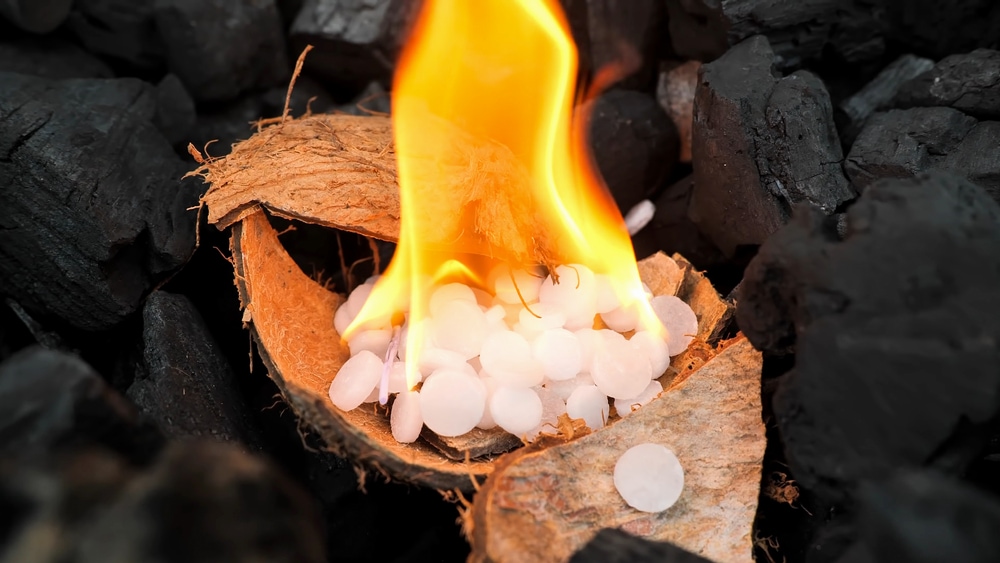
Hexamine fuel that you find in army surplus stores is also useful as a firelighter. It is also white. Hexamine is sold in packs. One 14-gram block will burn for 12 minutes.
Hexamine is said to be nontoxic. However, it does release some toxins, such as ammonia and formaldehyde, when burned.
Paraffin Wax

Paraffin wax is easy to carry around in a backpack. It is one of the safest chemical firelighters.
You can melt it and then dip cotton wool balls in it. These will reliably burn for 5 minutes without any other fuel source.
You can buy paraffin wax at household supply and hardware stores. It originates from petroleum, oil shale, and coal shale.
Magnesium shavings

Magnesium is highly flammable when exposed to oxygen. You can buy a striker with a magnesium rod attached and use that. Scrape down the rod with a knife or a strike tool.
Collect the tiny shavings of magnesium and sprinkle them in a small pile on the surface to be lit. It’s then time to light it with a spark from a flint or lighter.
Magnesium is well known for starting fires in wet conditions. Magnesium strikers are very popular with preppers and backwoods campers.
You may also like: How Much Firewood Do I Need For Camping? Your Questions Answered
Natural Tinder
There are some natural tinders that are more likely to work with excess moisture. It’s all about knowing what to look for. So here goes… Hopefully, you have some of these near you.
Birch bark

Birch bark contains flammable oils. If you have time, you can extract oil from it to waterproof clothing, leather tack, and boots. This makes it ideal for natural kindling.
You can usually find birch bark that is coming off in sheets on dead birch logs. Scrape off the damp, moldy wood beneath.
You are left with a thin sheet of bark. Use a sheet of birch bark below your fire to stop moisture coming from underneath. Rip more birch bark into shreds and make a tipi over lit tinder.
You can watch this tutorial on how to light a birch bark with a spark.
Pine fatwood

Cut at the base of the branches where they join a fallen pine trunk. The wood here is saturated with pine resin. This is where it pools when the tree dies. The resin is an orange-amber color, which is very flammable when dry.
Pine fatwood is flammable because it contains turpentine. You can sometimes get fatwood from other trees, such as spruce or cedar. Pine is the best bet for fatwood, however.
Make this into thin strips with a knife for use as tinder. Leave it in bigger chunks, about 6 inches (10 cm) long, for kindling. This is another good reason to bring a hatchet and knife.
Check out the video below to know how to locate and harvest fatwood.
Tinder fungus
The Hoof Fungus (Fomes fomentarius) is a useful tinder. It looks like a horse’s hoof and is very hard. It grows out of birch trees.
It needs preparation first. There is a suede-like layer inside the fungus. It is this bit that is as good as tinder. To get at it, you need to cut off the hard outer layer of fungus. After that, cut away the softer pores underneath. You are left with the fuzzy, dry trama layer.
The trama layer can be beaten with a mallet or rock until it is like a flat suede cloth. It will catch and hold a spark for a long time. It burns very slowly.
You can use another fungus, Daldinia concentrica, too. It’s also known as King Alfred’s Cakes, as it looks like the cakes the English king burned in the story. This fungus is hard to touch. When completely dry, it can catch and hold a spark from a flint or magnesium firelighter.
Wood shavings and paper
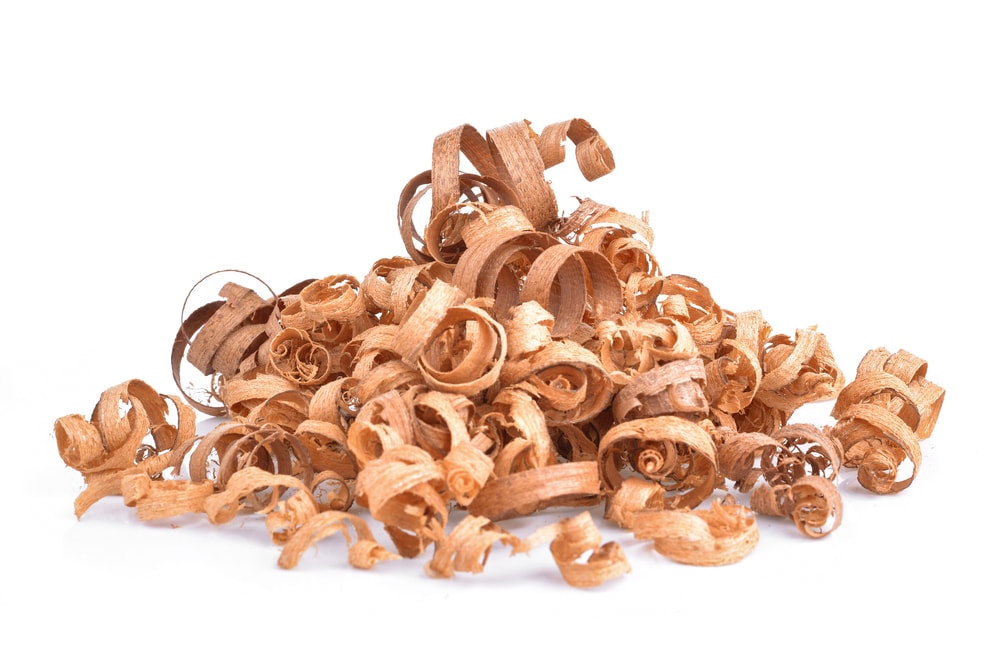
Wood shavings from seasoned wood are a good fire starter, especially if doused with some vegetable oil. They have a large surface area. You will need quite a lot of them, though, as they burn very fast.
Paper is useful if it is processed to make a more efficient, longer-lasting firelighter. I like to twist lengths of paper until they look like rope. I pour over a little melted candle wax or vegetable oil. These will work well when lit underneath kindling.
Twisted paper allows for air flow but burns slowly enough to light your wet wood.
A small amount of vegetable oil will give off fumes and create oily residue on a stove. It’s best to only use it for outdoor campfires.
You may also like: Staying Warm in Winter: How to Keep a Fire Going
Making Your Own Firelighters

With a bit of handicraft, you can make efficient firelighters and store them for when you need them in a kit bag. They can be made cheaply with materials you have hanging around at home. Plus, it’s a great buzz to make your own.
Why not give these tried-and-true methods a try? Next time you start a fire in wet weather, you’ll be ready.
Cotton balls with Vaseline

You will need:
- Packet of cotton balls (find these in the beauty section of a pharmacy) or large wads of cotton wool.
- Pot of Vaseline or any petroleum jelly
- ZipLock plastic bag
- Plate or bowl
- Sealable tub for storage
- Cardboard Egg box
- Tinfoil
Steps:
- If you’ve got a big wad of wool, make it into little balls about 2cm in diameter. Don’t compact them too much. They need to have a large surface area.
- Rub Vaseline all over the surface of the balls. You can dip them in the pot to do this, or spoon out some Vaseline onto a plate.
- Gently roll them around with your hand inside the bag until they are well covered. Don’t go over the top, as they will become compacted, like felt. They won’t take a spark if there isn’t enough surface area.
- Keep them in a sealable metal or plastic tin to stop them from getting squashed or wet.
- When you want to light one, cut one egg holder out of a cardboard egg tray and place the vaseline ball in the bottom of it.
- Wrap tin foil around the outside of this.
- Open it out and light with a flint at the top.
Egg carton and lint candles

You will need:
- A large cardboard egg carton with lid
- Paraffin wax, candle wax, and beeswax
- Dried lint from the washing machine
- Tin foil
Steps:
- Melt the paraffin wax in the oven or carefully on the stove.
- Rip up small bits of the cardboard egg carton lid.
- Place these in a layer at the bottom of the egg box. You only need to fill it halfway up the egg holders.
- Pour the melted paraffin wax carefully over the bottom layer of the egg box. The small pieces of cardboard should be soaked through.
- Add a wick of lint to the top of each egg cup as it is drying.
- You can also use a Vaseline cotton ball as a wick.
- Cut each candle out and place in tin foil. Wrap it up and save it for later. Or open it out and light the top with a lighter or striker.
You can also check out this video on how you can make your own paraffin wax:
Char cloth

Charcloth is basically cloth that has been turned into charcoal. It holds a spark really well and will glow with an ember for long enough for your kindling to catch fire.
You will need:
- Plain natural fabric such as cotton or cotton rope
- A metal tin with a sealable metal lid
- A drill or awl
- A fire or gas cooker
Steps:
- Drill a small hole in the lid of your metal tin.
- Fill the tin with cotton cloth or cotton rope.
- Put the lid on tightly.
- Place the tin on your heat source.
- Watch until no more smoke comes out of the hole you made in the top of the tin. When this happens, your charcloth or rope is ready.
- Allow the tin to cool. The charcloth should be black. You can catch a spark with this and light a fire.
You may also like: Get To Know Your 20 Types Of Lighters
Keeping Your Tinder Dry
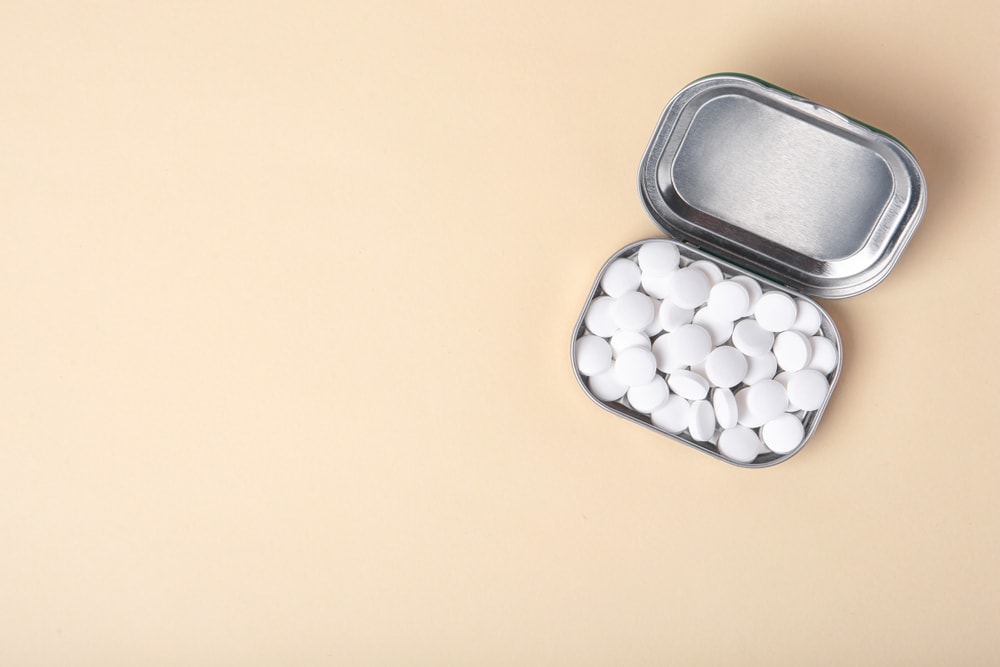
It’s vital that your all-important dry tinder supply stays that way.
As anyone who’s left newspapers outdoors knows, excess moisture could ruin your chances of starting a fire in wet weather. So what’s the best way to keep your tinder away from contact with moisture?
The container you keep your tinder in must be watertight, light, and strong. Below are some examples of useful containers that I and others have used for tinder. You don’t need to spend lots of money, either.
- Old film canister containers
- Tobacco tins
- Small biscuit or chocolate tin
- Waterproof match container
- Small Tupperware container
You can use ZipLock plastic bags for tinder, but some tinder, like cotton wool balls in Vaseline, might get too compacted if other items in your kit squash them. If they are compacted, they will not work as well. It’s better to double-bag your tinder in case one bag is punctured.
Mint candy tin cans are ideal for carrying tinder. You just need to eat the mint candies first!
You may also like: Bonfire vs Campfire: What’s the Difference?
FAQs

How long does wet firewood take to dry?
Depending on how wet the wood got, seasoned firewood can take from a week to two weeks to dry out if kept in a sheltered, airy place. Green wood that has not been seasoned can take anywhere from 6 months to 2 years.
How do you dry wet wood quickly?
Cut the bark off the wood to allow moisture to escape. Stack the wood in a crisscross pattern to allow more airflow. Put it in a place with a roof but no sides. This allows for optimal wind to dry out the wood without it getting wet.
How do you burn unseasoned wood?
It’s not a good idea to burn unseasoned wood unless it is ash wood. If you have no other option, cut the unseasoned wood into pieces no larger than 3 inches (7.5cm) in diameter.
Burn no more than five pieces at a time. This will reduce the smoke, and the fire will burn more efficiently.
Is it safe to burn dirty wood?
Wood that has been painted or treated shouldn’t be used as firewood. Unless there is no other option, These types of wood release toxins. You should never cook with dirty wood.
Even driftwood has a high salt content, which means it releases chlorine when burned. It is never a good idea to burn MDF or other wood composites. They contain toxins from the glues used.
What is a fire bowl?
A fire bowl is a concave bowl-shaped container that you can light fires in. Usually, it will have short legs to hold it off the ground. It will be made of metal.
Fire bowls are good for use in areas where the ground needs to be protected from fire. They are portable, unlike a fire pit. They are not so useful in wet weather, as they tend to hold water too.










